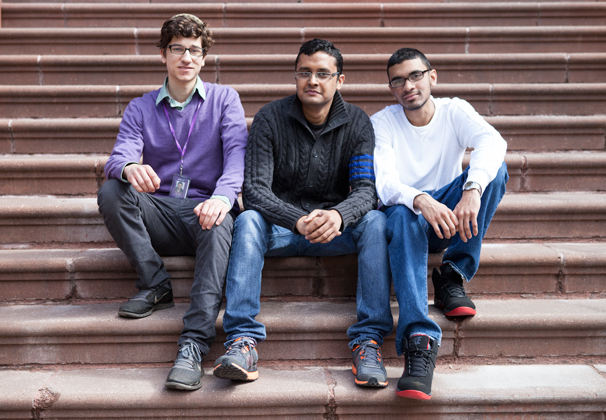
A group of students from the Polytechnic Institute of NYU may have the answer to ending gun violence across schools in the United States.
NYU-Poly sophomore Joshua Soussan and his teammates, sophomore Deepak Goel and freshman Kevin Veerasammy, are proposing an invention that could prevent thousands of students from becoming victims of school shootings. The proposal, known as the Aegis project, is a direct response to President Obama’s call for innovators to work to keep children safe in schools following the shooting in Newtown, Conn.
“When the Newtown massacre happened, I was sitting at home, and I started thinking about how to make guns safer,” Soussan said.
The device has two parts: a frequency emitter that can be installed in schools and a chip inside the gun. When the gun comes within range of the frequency, the chip blocks the firing pin from discharging a bullet, preventing the gun from firing. With Soussan handling the design work, Goel working on the mechanics and Veerasammy completing the electrical work, the trio is working on a prototype that will be complete in two weeks.
“This is not going to stop people from going to shooting ranges,” Soussan said. “It’s going to stop people from firing guns in malls, schools and other places they don’t belong.”
The project was originally submitted to NYU-Poly’s sixth annual Inno/Vention competition, which challenges students to pitch prototypes for real world problems. Although the Aegis is no longer in the competition, the project’s vision is still strong. Based on the device and the team’s goals, NYU-Poly will provide any necessary support and funding for the project in the coming months.
“The team working on the Aegis project exemplifies the power of Poly’s approach to education,” said associate provost Iraj Kalkorhan, who will meet with Soussan and his team today. “By seeking to solve an issue that can no longer be ignored, Joshua and his teammates have made NYU-Poly exceedingly proud.”
Leah Gunn Barrett, a board member of New Yorkers Against Gun Violence, is skeptical about how easy it will be to implement such a device.
“It depends on the cost … if you’re selling it with the gun, the cost goes up, so there will be resistance from gun manufacturers,” Barrett said.
There have been nearly 60 shootings in public areas in the United States since 1996, according to data from Infoplease and Pearson Education. To combat the prevalence of gun violence across the nation, Soussan hopes semi-automatic gun owners will use the device and modify their guns. Ideally, if they refuse, gun owners will need to reapply for a gun license.
“Once this device is built and tested, we really expect it to be something that’s going to be integrated into American law,” Soussan said. “Right now in Congress we have a huge gun debate raging.”
Soussan, who grew up with a father in the German military, has always been engaged in heated debates over how to handle weapons. Out of the many different viewpoints, one message has been consistent: Once you fire a bullet, you can’t take it back.
“They used to not require seatbelts in cars, but now [car owners] can’t get insured without it,” Soussan said. “Perhaps this can be the first step in gun control reform.”
A version of this article was published in the Monday, March 25 print edition. Jonathan Keshishoglou is a staff writer. Email him at [email protected].























































































































































